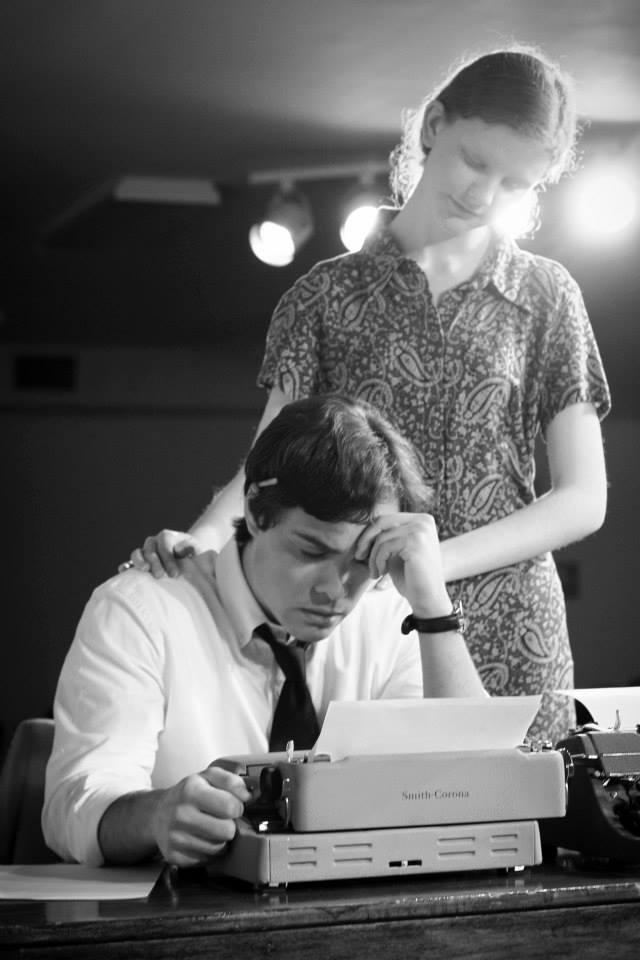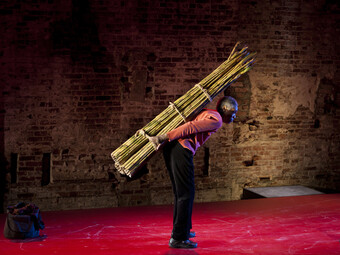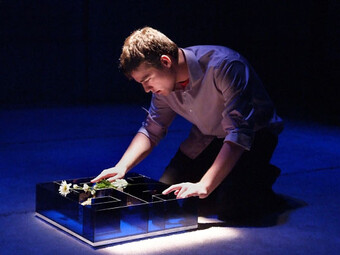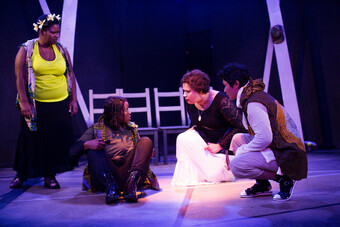One Story, Two Mediums
A Writer’s Journey from Film to Stage
I’ve had the unusual privilege to see a story I wrote become both a film and a stage play. The screenplay came first, when I wrote on assignment for an independent film company. The stage script came three years later, when I had a few free moments and no sense of the crazy, exuberant world of theatre.
The Screenwriters is a 1940s-era dramedy about two Hollywood screenwriters who must collaborate on a script in twenty-four hours, or else get fired. It’s a film with minimal production requirements and a play with one relatively elaborate set. It deals with the beginning of the film industry, but it follows the classical unities of time, place, and action.
For me, experiencing how each art form developed a single story showed me the inescapable differences between stage and theatre. Both tell stories through physical action and spoken word, but that’s about where the similarities end.
My experience with the film production was probably similar to that of most non-directing screenwriters. The cast and crew for the film version of The Screenwriters are a fantastic bunch of people who I believe did justice to my script; yet, I didn’t have much control over subsequent changes after I turned in my final draft. The actors changed lines of dialogue, and the director rewrote the ending of the script without asking me. (To be honest, though, I liked his ending so much that I wrote it into the stage script.)
When I visited the film set, I probably saw five minutes of the final film. The actors would deliver a handful of lines, then wait around for a quarter of an hour as the crew reset the lights and camera for another take. The film, of course, achieves a sense of realism that a play can’t duplicate. Close-up shots allow audiences to watch the two lead actors strike typewriter keys. There’s no proscenium arch, no giveaway that the set isn’t actually a studio bungalow in 1940s Hollywood. Film is static, even enduring. As long as DVD copies last, viewers can see this version of the story over and over again.
Film has an unprecedented reach and a flair for visual spectacle. Theatre is an embodied, ancient art that forces us to listen to the words of all kinds of characters.

Plays, by contrast, are ephemeral. If you don’t capture a particular performance on camera, no one can recreate the precise emotions and audience reactions of that night. A play lasts only in the memory. It carries a different flavor every time it is performed.
When I worked on the stage version of The Screenwriters, I had the chance to co-direct, even though I had little prior experience. The fleeting nature of theatre struck me from our first rehearsal. With theatre, the entire cast and crew have only one shot to impress the audience. There are no second takes once the actors step onstage. I had no clue what a challenging and rewarding experience this would be.
Being a playwright-director also gave me an incredible amount of control over my script, as well as an unparalleled lesson in storytelling. Listening to actors read my lines taught me faster than anything how to recognize a clumsy line of dialogue. We edited the script to fit actors’ performance styles and personalities, and I molded the actors’ delivery to reflect my initial vision for the story.
Perhaps one of the most striking examples of the difference between film and theatre is illustrated by one of my favorite scenes. Later in the script, the main character, a cynical old writer named Stu, falls asleep and dreams of his past. Stu’s sister gave up her dreams so he could go to Hollywood, and the flashback recalls their final goodbye at a Kansas train station. In the movie, this scene was reduced to a voiceover. The film crew had a minimal budget and couldn’t find a good train station for filming.

For the stage version, however, we turned the scene into a dream sequence. A wonderful young actress played Stu’s sister, and she entered the stage with blue mood lighting and smoke. The audience got to see Stu and his sister talking face to face. They relived Stu’s heartbreak and his sister’s hope. As Stu’s sister left the stage, she would turn back, gaze lovingly at Stu, and blow him a kiss. Audiences would always grow quiet during this scene—a sure sign that our actors hit emotional nerves.
As I think about it, I realize this play meant so much to me because of the very nature of theatre. While a movie can move us and even change our lives, a play feels more immediate, more visceral. Having actors be physically present onstage brings an intensity to the performing arts that film rarely, if ever, parallels.
I did not substantially change the script of the stage and screen versions of The Screenwriters. The characters met the same fates, and many of the same jokes were played for laughs. However, my two experiences with this one story could not have been more different.
As a writer, I think I will always stand between the worlds of film and theatre. Film has an unprecedented reach and a flair for visual spectacle. Theatre is an embodied, ancient art that forces us to listen to the words of all kinds of characters. I may have grown up on film, but I’ve fallen in love with theatre—for the way it can touch the human soul.










Comments
The article is just the start of the conversation—we want to know what you think about this subject, too! HowlRound is a space for knowledge-sharing, and we welcome spirited, thoughtful, and on-topic dialogue. Find our full comments policy here